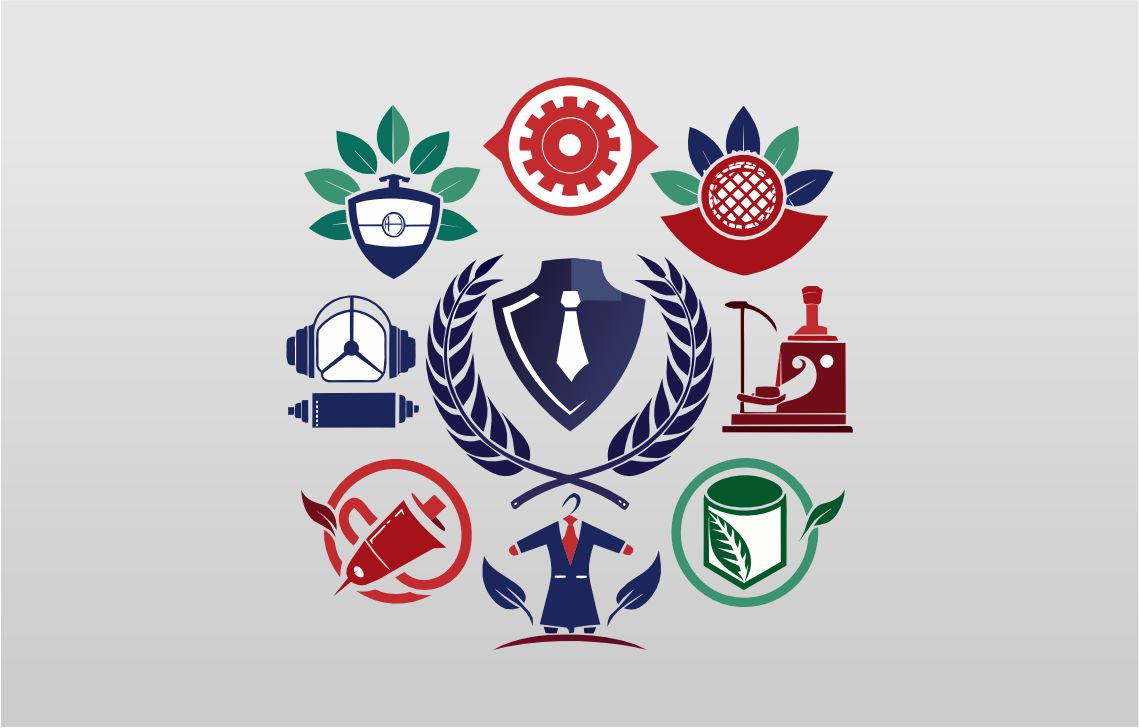Graphic Design
Logo Design Across Different Industries Tailoring Logos For Specific Niches
In today’s competitive business landscape, where every industry strives to stand out, the significance of a well-crafted logo cannot be overstated. A logo serves as the visual representation of a brand, encapsulating its identity, values, and offerings in a single graphic. However, what works for one industry may not necessarily resonate with another. Tailoring logos for specific niches is crucial to effectively communicate with the target audience and establish a distinctive brand identity.
Importance of Tailoring Logos for Specific Niches
Understanding the unique characteristics and preferences of different industries is paramount when designing logos. While certain design principles remain universal, such as simplicity and versatility, nuances exist that require careful consideration. Tailoring logos to specific niches allows businesses to resonate more deeply with their target demographic and differentiate themselves from competitors.
Characteristics of Effective Logos
Before delving into industry-specific designs, it’s essential to outline the key characteristics of effective logos. These include:
- Simplicity: A simple logo is more memorable and versatile across various applications.
- Versatility: A good logo should look equally impressive whether scaled down on a business card or enlarged on a billboard.
- Relevance: The design elements should align with the industry and brand message.
- Timelessness: A timeless logo remains relevant and impactful despite evolving trends.
Logo Design for Tech Industry
In the fast-paced world of technology, where innovation is paramount, logos should reflect modernity and forward-thinking. Clean lines, minimalist designs, and bold typography are often favored to convey innovation and sophistication. Incorporating geometric shapes or abstract symbols can evoke a sense of technological advancement and cutting-edge solutions.
Logo Design for Healthcare Sector
In the healthcare sector, trust and professionalism are of utmost importance. Logos for hospitals, clinics, and medical practices often feature symbols such as crosses, hearts, or medical icons to convey care and wellness. Soft, soothing colors like blue and green are preferred to evoke a sense of calm and reliability.
Logo Design for Food and Beverage Industry
Logos in the food and beverage industry should entice and whet the appetite of consumers. Fresh, vibrant colors and playful typography are commonly used to convey the freshness and flavor of the products. Incorporating food-related symbols or illustrations can further reinforce the brand’s identity and offerings.
Logo Design for Fashion and Beauty
In the fashion and beauty industry, aesthetics reign supreme. Logos should exude style, elegance, and glamour to resonate with fashion-conscious consumers. Sleek fonts, minimalist designs, and chic symbols like crowns or flowers are often employed to reflect the brand’s sophistication and allure.
Logo Design for Education Sector
Education logos should inspire a sense of learning, growth, and aspiration. Incorporating symbols such as books, pencils, or graduation caps can symbolize knowledge and achievement. Bright, vibrant colors are often used to evoke a sense of energy and enthusiasm, particularly in logos targeting younger audiences.
Logo Design for Real Estate
Logos in the real estate industry should convey stability, reliability, and trustworthiness. Architectural elements like buildings, rooftops, or keys are commonly used to symbolize the business’s focus on property and housing. Neutral colors such as blue, gray, or beige are preferred to convey professionalism and sophistication.
Logo Design for Nonprofit Organizations
Nonprofit logos should evoke emotion and empathy while clearly communicating the organization’s mission and values. Incorporating symbols related to charity, community, or unity can help convey the organization’s altruistic goals. Warm, inviting colors like red, orange, or yellow are often used to evoke feelings of compassion and solidarity.
Conclusion
In conclusion, effective logo design goes beyond aesthetics; it’s about creating a visual identity that resonates with the target audience and communicates the essence of the brand. By tailoring logos to specific industries, businesses can establish a strong presence, foster brand loyalty, and ultimately drive success.
FAQs
1. Why is logo design important for businesses?
Logo design is crucial as it serves as the visual representation of a brand, helping businesses to establish their identity, differentiate from competitors, and create a memorable impression on consumers.
2. How can I ensure my logo resonates with my target audience?
Understanding your target audience’s preferences, values, and aspirations is key to creating a logo that resonates with them. Conducting market research and soliciting feedback can help ensure your logo effectively communicates with your target demographic.
3. What role do colors play in logo design?
Colors evoke emotions and associations, making them a powerful tool in logo design. Choosing the right color palette can help convey the desired message and evoke the intended response from consumers.
4. Should I opt for a timeless or trendy logo design?
While trendy designs may seem appealing initially, they can quickly become outdated. Opting for a timeless logo ensures longevity and relevance, allowing your brand to remain consistent and recognizable over time.
5. Can I design my logo myself or should I hire a professional?
While DIY logo design tools are readily available, hiring a professional designer offers numerous advantages. A professional designer possesses the expertise and creativity to create a unique, impactful logo tailored to your brand’s identity and objectives.

